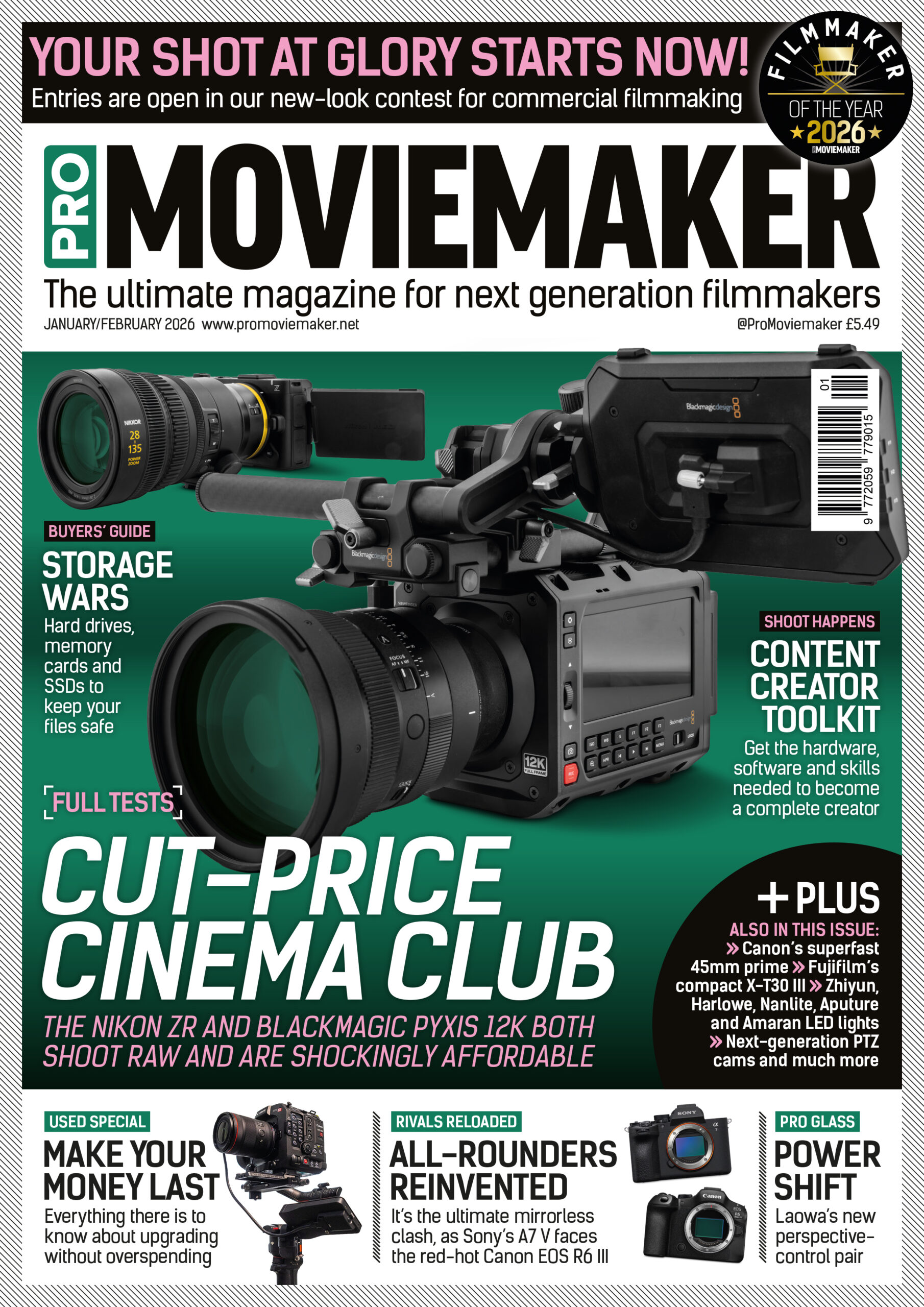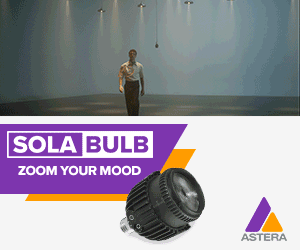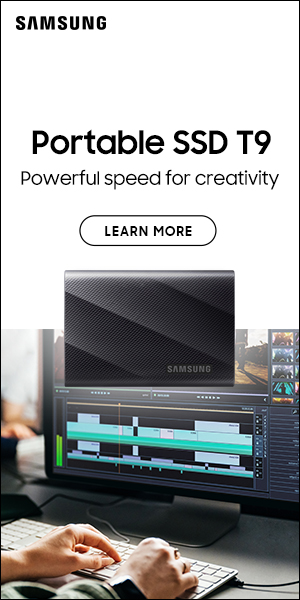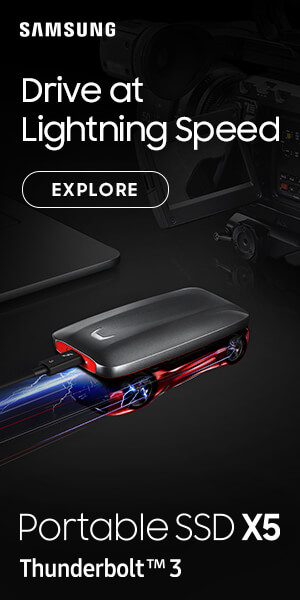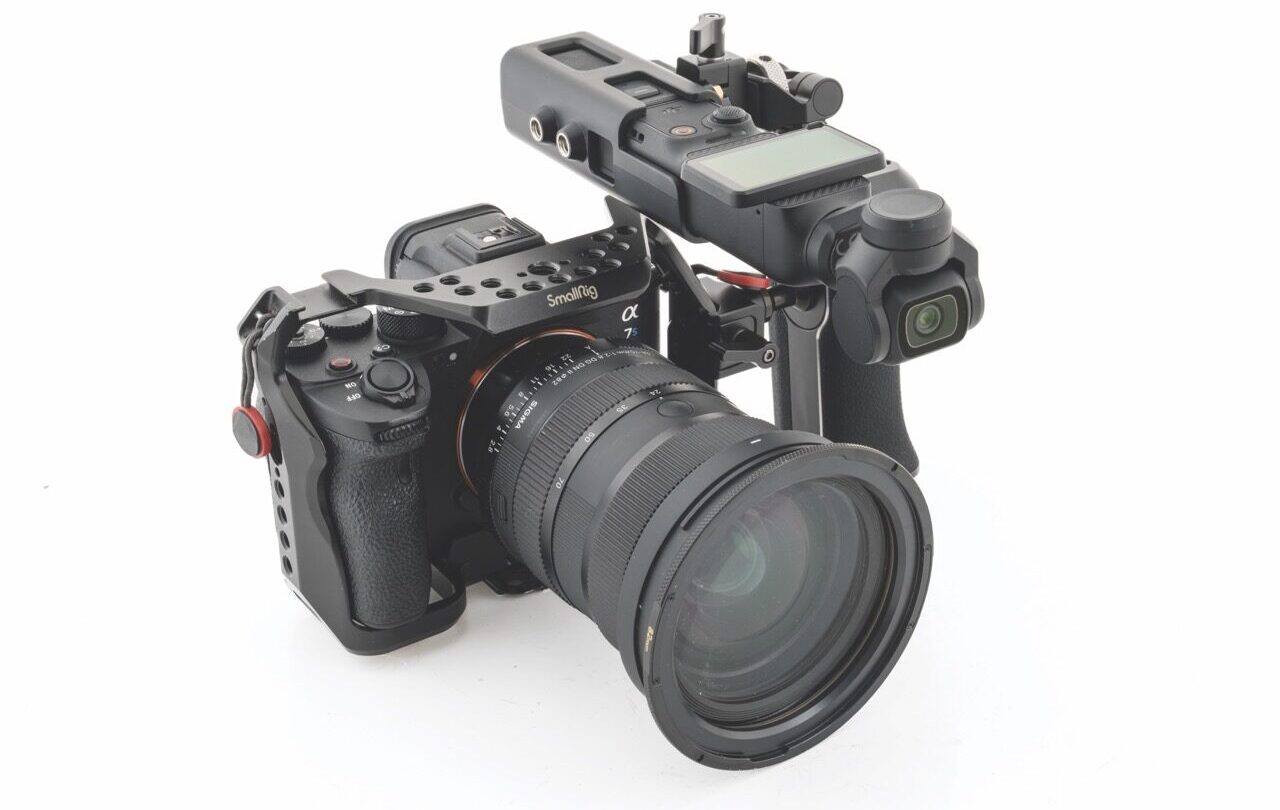
Mini test: Smallrig DJI Osmo Pocket 3 Extended Cage kit
Posted on Jul 22, 2025 by Nicole Tilby
We put Smallrig’s DJI Osmo Pocket 3 rig to the test – a clever setup for solo creators capturing wide and tight shots at the same time
If you genuinely have no idea why you would want to mount a DJI Osmo Pocket 3 gimbal camera to the top of your mirrorless camera, then this is not the product for you.
It’s aimed at solo-shooting content creators who want two different views of the same scene simultaneously, or to capture a wide shot in video and an alternative shot in stills. Or vice versa, of course.
Smallrig has been bombarded with requests to make a system that helps fix the super-popular DJI camera to a regular camera, and has come up with a solution: a bespoke rig to hold up the camera allied to a mix-and-match set of standard Smallrig parts.
At the heart of the Smallrig kit is the extended cage system built to be used with the Osmo that’s fitted with the optional extra DJI battery handle, which has a 1/4in-20 screw at the bottom. The £20/$20 cage just slips over the camera body, screws into the bottom and still gives access to all the controls. It comes with a pair of 1/4in-20 threaded holes on either side, as well as a Nato rail to bolt on. Using the extended battery means the camera unit is longer, so it sticks out further at the front to avoid getting the end of your lens in the shot.
If you already have a cage on your camera with a coldshoe, simply use a standard monitor mount with a coldshoe adapter at £26/$20. This does the job, but the extra size of the camera means it’s difficult to stop it from tilting during a shoot.
A far more sensible solution for filmmakers is investing in the quick-release Nato clamp at £25/$15, the £73/$80 rotating Nato handle for the left side that slips onto the Smallrig camera cage, and the new monitor mount with Arri-style fitment at £37/$40. So by now, that £20/$20 cage – with all the accessories to make it really work – comes in at £155/$155. Plus the £59/$69 for the DJI handle – that’s presuming you already have a rig on your camera.
This set-up does add weight and bulk to the camera, but the left-side handle – which is adjustable and can rotate – works well at taking away the strain. And the Nato rail and Arri anti-twist mounting means it’s much less likely for the camera to move when you’re shooting.
We used this set-up to shoot a top-level motocross race and it worked very well, although on a 70-200mm lens we had to remove the lens hood and be careful so the front end didn’t appear in shots too much. You have to play with gimbal settings to see which works for you.
Most of the time, we shot telephoto on the main camera to get up close to the action, while the DJI produced a wide shot that was easy to cut to once you’ve nailed the grading. At the start of one race, we filmed a wide shot in video on the DJI, but also a 20fps motordrive sequence of stills on the main camera – and this resulted in some stunning thumbnails.
This won’t be the answer to every shoot, it but can be made to work well in certain situations. For not a huge investment, you have wide and tight shots to add to your production.
It’s a useful bit of kit that content creators have been craving.
£20/$20
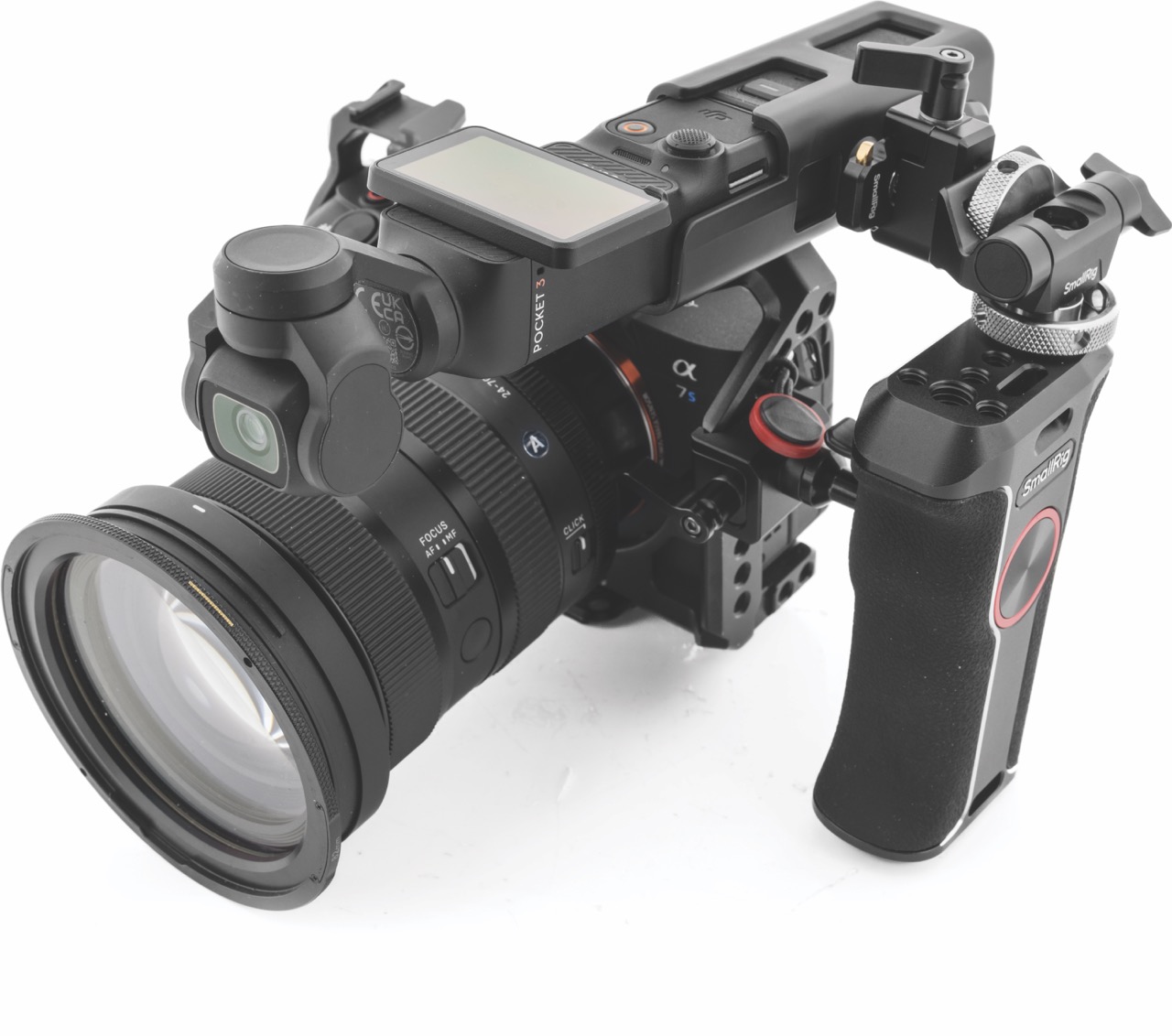
Specifications
- Material: Aluminium with integrated foam padding
- Fitment: DJI Osmo Pocket 3
- Accessory mounts: 2x 1/4in-20 threads on either side
- In the box: Nato rail and allen wrench
- Weight: 53g/0.12lb
- Dimensions (wxhxd): 53.6×34.2x115mm /2.1×1.3×4.5in
Pro Moviemaker rating: 8/10
A bit of a Frankenrig, but can still be made to work pretty well
- Pros: An extra angle on every shot
- Cons: Plenty of extra parts to tighten up
This review was first published in the July/August 2025 issue of Pro Moviemaker



